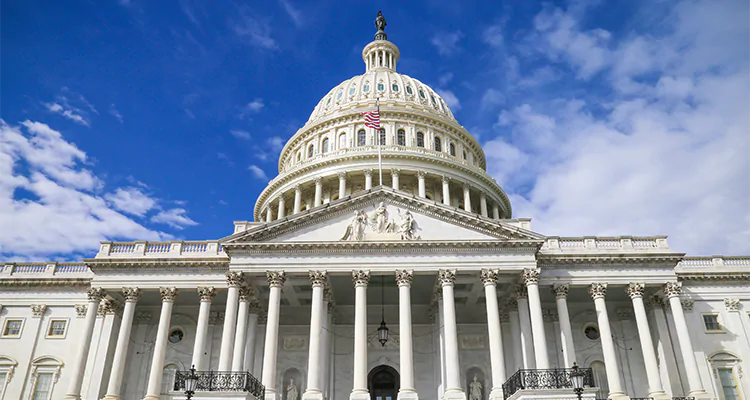30×30 Conservation Goal: What does it mean for the Mississippi River?
The Mississippi River Network (MRN) was pleased to host Kate Burgess (National Caucus of Environmental Legislators), Alayna Chuney (NCEL), Eliot Clay (Illinois Environmental Council), Lindsay Keeney (IEC), and Andrew Schmidt (the Conservation Fund) for an engaging panel discussion to answer these and many more questions in early March.

What is the 30×30 goal?
30×30 concept is a direct response to the rapid decline of biodiversity on our planet. The Living Planet Report published in 2020 revealed a global species loss of nearly 70 percent in less than 50 years – driven by habitat loss, invasive species, climate change, and pollution.
Every 30 seconds in the U.S. we lose the equivalent of a football field of natural landscape. In 2016, renowned conservation biologist E.O. Wilson called for half of Earth to be conserved by 2050 to manage sufficient enough habitat to begin to reverse the species extinction crisis we are seeing today.
The idea is simple: if you save habitat, you save species, and you save the planet. The goal to conserve 30 percent of land and ocean areas in our country by 2030 is an attempt to take a bite a bite out of that 50 percent by 2050 vision put forward by E.O. Wilson.
Today, estimates show that 26 percent of our water and 12 percent of land in the U.S. is protected.
The 30×30 concept and goal has international support. 80 leaders from around the world have adopted similar conservation goals, and it is a priority for the United Nations Conference on Biodiversity, in addition to being supported by a Biden-Harris Administration Executive Order.
The 30×30 conservation goal is guided by 5 key principles:
- Support locally led conservation
- Work toward a more equitable and inclusive vision for nature conservation
- Honor the sovereignty of tribal nations
- Support private conservation
- Be guided by science
These principles were created to prevent repeating the early history of land conservation in North America that was characterized by unlawful land grabs and community extraction and ultimately rooted in racist and white supremacist intentions.
What does 30×30 mean for the Mississippi River?
- 30×30 can support state conservation goals in the 10-state Mississippi River corridor
- It can encourage innovative approaches for working lands and agricultural lands to support conservation.
- In our region, 30×30 will not be achieved through the traditional open space and fenced-off conservation model that might work better in the Western United States.
- 30×30 is an opportunity to see wetlands and sustainably operated farmlands as dynamic water filters. Nature is the most effective water treatment plant – conservation in the Mississippi River basin not only achieves biodiversity goals but also improves water quality.
- It is an opportunity to scale up voluntary, incentive-based conservation on private lands. Public lands conservation can’t be the focus in our region. In Illinois, for example, 70 percent of land is dedicated to agriculture already. For our basin, our focus will be on voluntary private lands conservation.
For more unique impacts of 30×30 on the Mississippi River, watch the recording here!
How can I support 30×30 in my state?
States are starting to answer specific questions about what land protection will look like under this goal for their states. Hawaii, California, Nevada, Maine, South Carolina, New York, and Michigan have all introduced legislation and resolutions illustrating their state-level support for the national 30×30 goal.
To stay up to date on how you can get involved, follow the National Caucus of Environmental Legislators, Illinois Environmental Council, and the Conservation Fund on social media at:
- @ncelenviro, https://twitter.com/ncelenviro
- @ilenviro, https://twitter.com/ilenviro
- @ConservationFnd, https://twitter.com/ConservationFnd
And if you aren’t already, don’t forget to become a River Citizen today to stay up-to-date on opportunities in all 10 states related to the 30×30 goal.
Join our
COMMUNITY
And Get a Free E-book!
When you sign up as a River Citizen you’ll receive our newsletters and updates, which offer events, activities, and actions you can take to help protect the Mississippi River.
You’ll also get our free e-book, Scenes From Our Mighty Mississippi, an inspiring collection of images featuring the River.
Step 1
Become a River Citizen
Yes! The River can count on me!
I am committed to protecting the Mississippi River. Please keep me informed about actions I can take to protect the Mississippi River as a River Citizen, and send me my free e-book!, Scenes From Our Mighty Mississippi!
Step 2
LEARN ABOUT THE RIVER
We protect what we know and love. As a River Citizen, you’ll receive our email newsletter and updates, which offer countless ways to engage with and learn more about the River. You can also follow us on Instagram, Facebook, X (Twitter) , and YouTube, where we share about urgent issues facing the River, such as nutrient pollution, the importance of floodplains and wetlands, and bedrock legislation such as Farm Bill Conservation Programs.
Step 3
Take Action
There are many ways you can jump in and take action for a healthy Mississippi River. Our 10 actions list includes simple steps you can take at any time and wherever you are. Check out our action center for current action alerts, bigger projects we are working on, and ways to get involved.


